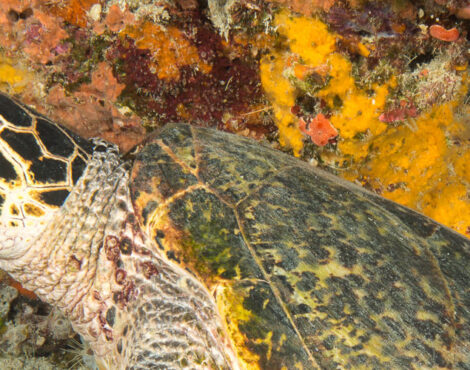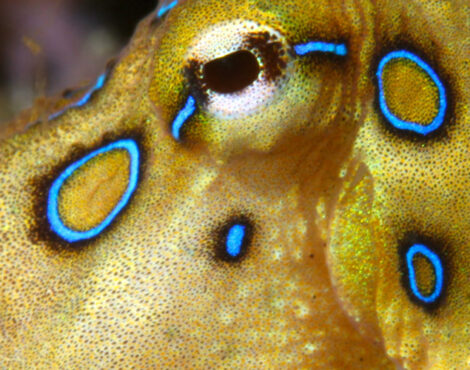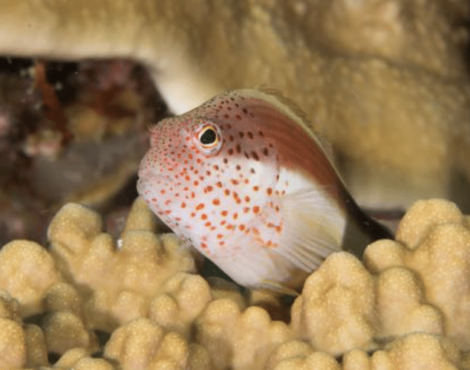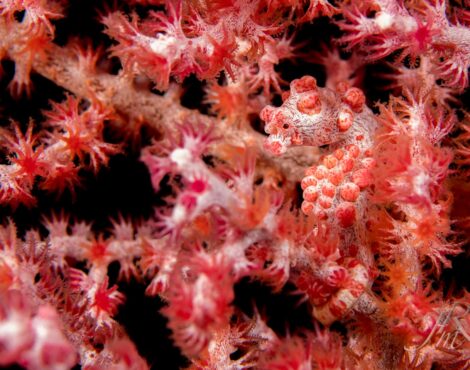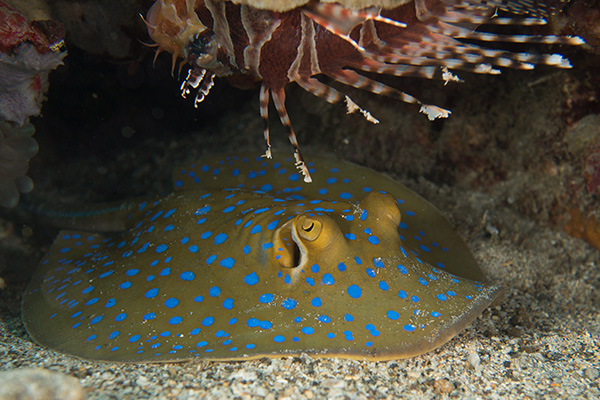
With thousands of species of fish living within the boundaries of Bunaken Marine Park, it is easy to forget some of the more common species that live on these reefs â no matter how incredibly beautiful these critters might be.
So we thought we would highlight not only one of the most common stingrays we encounter in Bunaken Marine Park, but arguably the most beautiful â the bluespotted ribbontail ray.
What are bluespotted ribbontail rays?
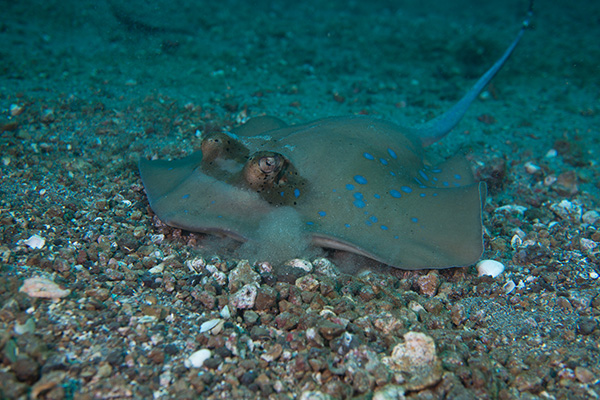
Known scientifically as the Taeniura lymma, the bluespotted ribbontail ray is a small species of stingray that can be found throughout most shallow waters found within the tropical Indo-Pacific region. It can be found as shallow as the intertidal zone, to a maximum depth of around 30 metres.
With a maximum disc width of 35cm, it is a fairly small species of ray, and it is instantly recognisable due to its contrasting skin colouration of neon blue spots on a yellow gold body, and a pair of blue stripes running down the length of the tail.
Although they are the most common species of stingray we encounter in Bunaken Marine Park, they are considered a near threatened species by the IUCN (International Union for Conservation of Nature), as the species faces overfishing and widespread habitat destruction throughout much of its range.
Bluespotted ribbontail ray behaviour
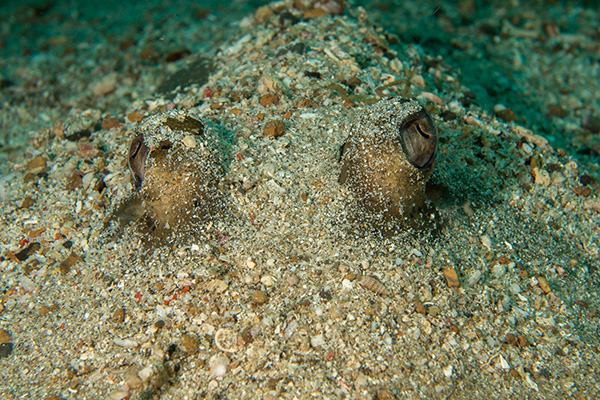
Although one of the most abundant stingray species living on Indo-Pacific reefs, bluespotted ribbontail rays are not as commonly spotted as one might expect.
They are nocturnal animals, so during daylight hours they are hidden under overhangs, table corals, ledges, or in caves, and they almost always spend their days hidden alone. The only sign the animal is even there might be from the tail that is sticking out from its hiding place. This means that they can be spotted by divers during the day, however snorkellers will usually miss out, unless they are good at breath hold diving. Once the sun has set, the rays will come out from their daytime hiding spots and congregate into groups over large sandy areas, when they work together to forage for food.
What does a bluespotted ribbontail ray eat?
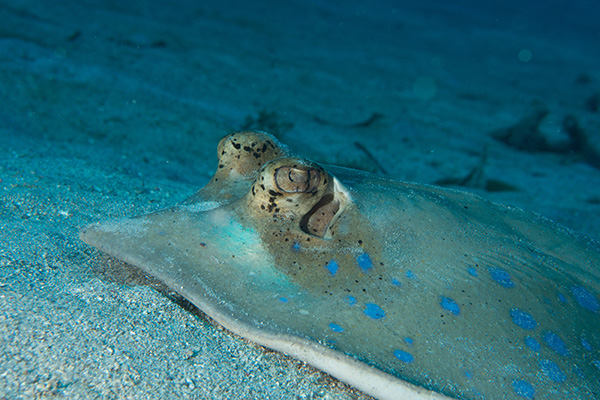
Unlike many other stingray species, the bluespotted ribbontail ray rarely buries itself in the sand, however they are often seen digging.
What they are actually doing, is excavating sand pits in search of food. They normally dig for sand dwelling molluscs, polychaete worms, crabs, and shrimps, however they will happily eat any small benthic fish that is not fast enough to get away.
Their mouth is located under the body of the ray, and when they detect their prey, they use their large disc shaped fins to trap the prey and manoeuvrer it into their mouth. It is common to see other fishes (such as goatfish) following the rays, trying to pick up any scraps that they left.
Are bluespotted ribbiontail rays dangerous?
While generally a timid and docile species, the bluespotted ribbontail ray is a type of stingray, and one should always be cautious when close to one. The tail is armed with venomous barbs that are capable of inflicting excruciatingly painful puncture wounds.
As they do not usually burrow into the sand, a diver is unlikely to face any issues swimming close to the sand. However, as they can be found living within the intertidal zone, swimmers and bathers should pay special attention when walking in the shallows, and they should never walk over the seagrass meadows, as the rays are known to actively hunt in these areas or hide amongst the blades during the day.
Where can I spot a bluespotted ribbiontail ray?
They are probably the most common ray we encounter within Bunaken Marine Park, although saying that, you are not guaranteed to spot one every time you head to the water â carrying a torch will drastically increase your chances though, as you can illuminate under every ledge and overhang you find. Snorkellers may be lucky to spot a tail sticking out from under a table coral during the day, but daytime snorkelling encounters with these beautiful rays are sadly, uncommon.
By far the easiest way for divers AND snorkellers to have a close encounter with bluespotted ribbontail rays is by joining one of the night boats. It doesnât matter if the boat goes to the North Sulawesi mainland, or one of Bunakenâs walls â night sightings are common at both. Snorkellers may even have a better chance of seeing the rays congregate, as they tend to do so more in the shallow waters than deeper on the slope.


